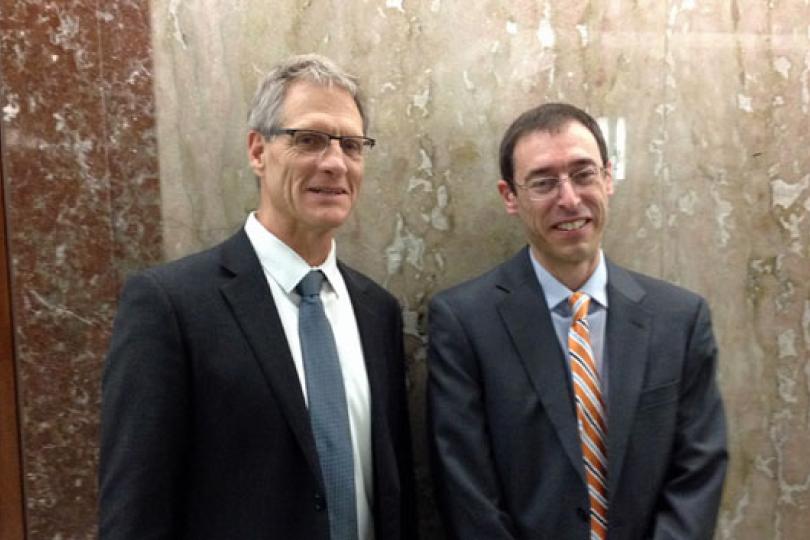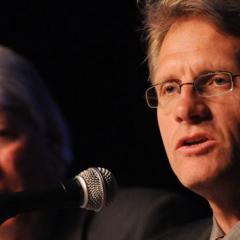Towards better worker and public safety
Evan Hansen lives and works in West Virginia, where in January 2014 an above-ground chemical storage facility near Charleston failed, leaking thousands of gallons of toxic chemicals into the Elk River -- a source of drinking water for over 300,000 people.
Mike Wilson lives and works in California, where he has been involved in advocating for changes in worker safety regulations in the wake of the August 2012 pipe failure at a Chevron refinery in Richmond, which released flammable petroleum gases and formed a vapor cloud that ignited and injured six workers. Toxic smoke from the fire caused approximately 15,000 people from the surrounding area to seek medical treatment.
Both Fellows have other interests and projects, but these events brought them together on March 6, 2014, to testify before the U.S. Senate Committee on Environment & Public Works entitled, "Preventing Potential Chemical Threats and Improving Safety: Oversight of the President's Executive Order on Improving Chemical Facility Safety and Security."
As Chairman Barbara Boxer stated in her opening remarks, the hearing was to find out what concrete steps are being taken by government agencies and organizations to avoid failures like this in the future:
The ever-growing list of catastrophic failures should be a wakeup call for all of us, and we must take steps to ensure that similar disasters never happen again. The good news is that under existing law, EPA has the authority to begin to strengthen safety at facilities that handle dangerous chemicals.
In 1986, Congress passed the Emergency Planning and Community Right-to-Know Act to enhance planning to address chemical disasters. And in the 1990 amendments to the Clean Air Act, Congress required risk management planning to help save people’s lives at facilities that handle dangerous chemicals. The Clean Water Act contains legal authorities that address spill prevention and control, but this authority has primarily been used to address oil-related hazards.
Federal safety and health officials must use all available tools to protect the health and safety of people working in and living near chemical facilities.
We are here today to ensure that the Executive Order Working Group identifies ways to make real, measurable improvements in the oversight of chemical facilities. I expect to hear from our EPA witness regarding actions the Working Group has taken to date and the issues under consideration for future action.
A central focus of this hearing today is to check in on the progress of the Working Group so far, and to make clear that we must move forward as rapidly as possible. Delay is unacceptable.
I also look forward to an update from the Chemical Safety Board (CSB) regarding its ongoing investigations into these chemical disasters and to learn how the Working Group is incorporating CSB’s recommendations.
We will also hear about efforts in my home State of California to improve refinery safety, which were launched after the Richmond refinery disaster, and how a similar approach can be applied on the Federal level.
Federal agencies and industry must act quickly to adopt safety measures that can save lives before another tragedy happens.
Both Fellows' testimony and answers to direct questions were well received by the committee, and we are proud that their leadership on public and worker safety in their respective states has been recognized at the national level.
Additional Resources
Visit the committee link to watch a recording of their testimony
Read a copy of Mike Wilson's testimony as entered into the record
Read a copy of Mike Wilson's oral testimony as delivered
Read a copy of Evan Hansen's testimony as entered into the record


